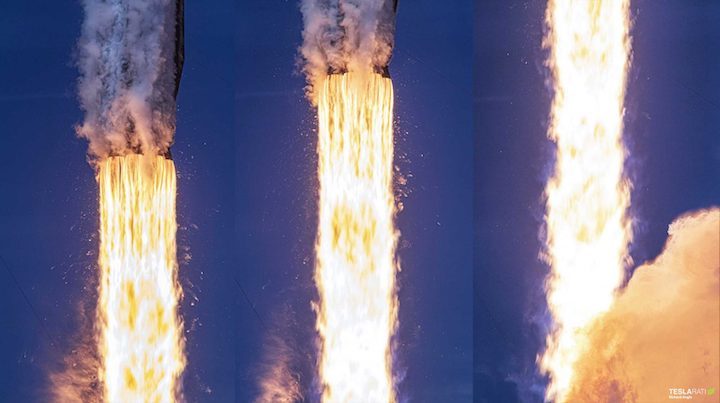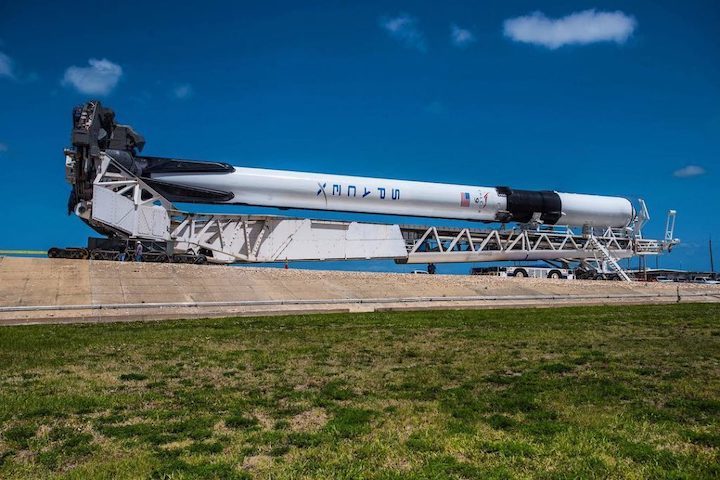21.08.2020

CEO Elon Musk has reiterated that SpaceX is still pursuing a major rocket reuse milestone he originally set for the company several years ago and revealed that its Falcon rockets could ultimately soar far beyond it.
Musk has been talking publicly about reusable rockets for well over a decade but the first hard numbers linked to real hardware came with the debut of Falcon 9’s Block 5 upgrade in May 2018. In a conference call with reporters, Musk famously revealed that the Block 5 upgrade incorporated design changes that would ultimately allow SpaceX to reuse orbital-class Falcon boosters at least ten times each. An upper bound of 100+ flights per booster would also be possible with regular maintenance and part replacements every ten or so launches.
Since the upgrade’s May 11th, 2018 launch debut, Falcon 9 and Heavy Block 5 rockets have completed 37 launches – all successful – with only one in-flight anomaly, a March 2020 engine failure that prevented booster recovery but didn’t preclude mission success. Excluding three flawless Falcon Heavy launches, SpaceX’s 34 Falcon 9 Block 5 launches were collectively completed by 11 boosters – an average of >3 launches per rocket. In fewer words, SpaceX has accumulated a vast wealth of data with which it can judge the Block 5 design and CEO Elon Musk has some choice observations more than two years after his Block 5 press conference.

Falcon 9 B1046 – the first Block 5 booster – rolled out to the launch pad for the first time ever on May 3rd, 2018. (SpaceX)
In the simplest possible terms, Musk’s August 19th comments strongly suggest that the Block 5 upgrade has more than met the goals laid out for it back in 2018.
The fact alone that the average Falcon 9 Block 5 booster (even including one expendable mission) has launched more than three times is a major credit to the design. At the same time, SpaceX flew the same booster for the sixth time just days ago and achieved the fifth launch of three separate Falcon 9 boosters between March and August of 2020.
Now, with all that experience in hand and a Falcon 9 Block 5 booster already 60% of the way to the ten-flight reuse milestone, Musk says that “100+ flights are possible” and that “there isn’t an obvious limit.” While “some parts will need to be replaced or upgraded” to achieve dozens or hundreds of booster reuses, Musk says that SpaceX “almost never need[s] to replace a whole [Merlin 1D] engine.
Given that a Falcon 9 booster’s nine M1D engines are likely the most difficult part of each rocket to quickly and safely reuse, it’s extremely easy to believe that individual boosters can launch dozens – if not hundreds – of times with just a small amount of regular maintenance and repairs. In that sense, SpaceX has effectively achieved Musk’s long-lived dream of building a rocket that is (more or less, at least) approaching the reusability of aircraft.
Of course, even 100-flight Falcon boosters would still be at least one or two orders of magnitude distant from most modern aircraft, but that would still be a vast improvement over any other launch vehicle in history (especially including the Space Shuttle).
Musk says that SpaceX is still actively pushing to fly a Falcon 9 booster ten times and Starlink missions – allowing the company to mitigate risk on its own launches – will leave plenty of opportunities. If SpaceX can fly Falcon 9 booster B1049 every 60 days on average, the company could hit that ten-flight milestone as early as Q2 2021.
The SpaceX CEO also responded to a classic head-in-the-sand claim from traditional aerospace companies like United Launch Alliance (ULA), refuting the theoretical supposition that booster reuse “doesn’t make sense” until ten-flight reuse is achieved. Instead, Musk says that SpaceX only needs to fly each booster three times to ensure that booster reuse is cheaper than just building new rockets.
In short, despite the ad hoc rationalizations competitors continue to use to excuse years of denial and laurel-resting, SpaceX is routinely reusing rockets, saving major resources by doing so, and has still just barely scratched the surface of what is ultimately possible.
Quelle: TESLARATI

